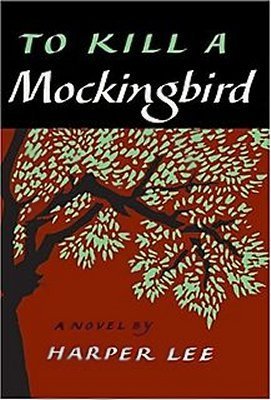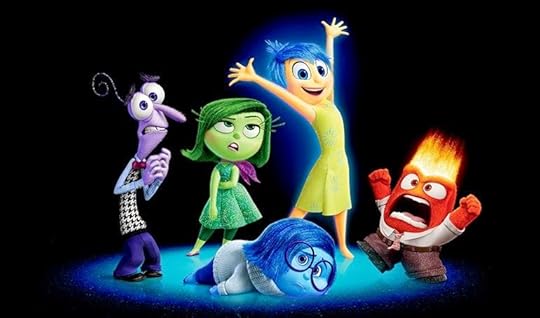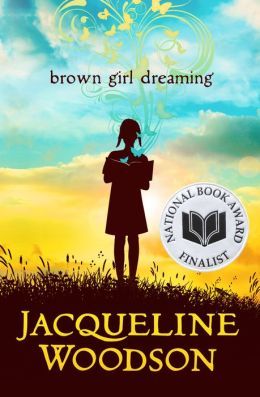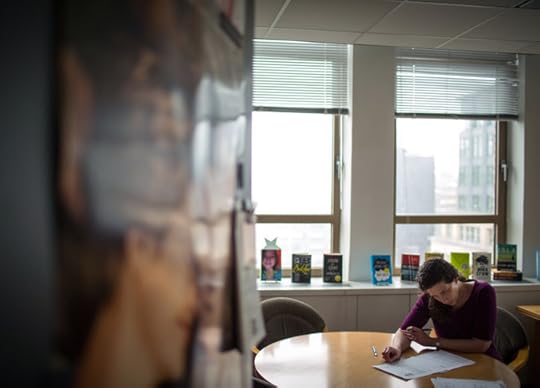Maria Tatar's Blog, page 8
July 25, 2015
Getting Inside the Mind of The Child
Before reading Harper Lee’s Go Set a Watchman, I decided to reread To Kill a Mockingbird, a book that I did not love when I first encountered it. The novel had been assigned to my son, in eighth grade at the time, and we read it together, aloud. Imagine my shock when, the second time around, I fell under the spell of To Kill a Mockingbird, and–its imperfections aside (the ending always feels melodramatic and contrived)–would make myself stop reading from time to time to make the book last longer.
Most will agree that Harper Lee lets us see the world through the eyes of a child in powerful ways. Scout tells the story as an adult but she slips back with ease into the consciousness of her experiencing self, seamlessly moving back to the older and wiser adult, who adds information and clarifies the child’s account. Scout is young, yet To Kill a Mockingbird is a coming-of-age novel, a genre designation that moves the book into the YA fiction camp. But like Donna Tartt’s The Goldfinch (why all the birds in fiction about the young?), To Kill a Mockingbird is a book for adults as much as for the young, perhaps more for adults than children. My discontent during that first reading stemmed in part, I believe, from the sense that you had to be an adult to understand how Harper Lee lets us go back to our own childhoods and immerse ourselves in all the perils of childhood–the injustices, the powerlessness, the transgressive energy–and also its comforts and pleasures. When you are 13, you get that and don’t need a Proustian nudge.
To Kill a Mockingbird takes us inside a child’s mind, but it also self-reflexively sends a powerful message about the importance about perspective, identification, and empathy. “You never really understand a person until you consider things from his point of view . . . until you climb into his skin and walk around in it” Atticus tells Scout. And the golden moment near the end of the novel, when Scout’s voice shifts into the third person and describes the events in her story from Boo Bradley’s point of view, tells us that she has internalized her father’s wisdom. In some ways, Harper Lee’s book inaugurated an age of empathy.
Last night I went to see Inside Out, with my son, now grown up. Imagine my surprise when he found it captivating and true, and I found the execution lifeless even as I loved the concept. I made a quick note to myself to see it again, though this time I won’t wait fifteen years.
July 23, 2015
Andrew O’Hagan Goes to Disneyland and Discovers That We Are All Imagineers
http://tmagazine.blogs.nytimes.com/2015/07/17/happiness-project-disneyland/
O’Hagan captures the transformative experience of going to a Disney theme park—transformative for adult and child, with adults basking in the glow of their own superlative parenting skills and children finding a world where everything is “legible, self-representational, literal and witty.” When you want ice cream, for example, you just look for a cone-shaped building with a scoop of vanilla on top of it. A brilliant analysis that supplements and surpasses Baudrillard in its tongue-in-cheek embrace of the culture industry, consumption, and the hyperreal.
The trace of Nabokov in the writing is sheer genius, and I now fully understand why I called my book about the power of stories in childhood Enchanted Hunters. Can you identify the paragraph below that is vintage Nabokov?
We went into the Disney California Adventure Park and found ourselves in a colored clamshell, entering the Little Mermaid: Ariel’s Undersea Adventure, a ride in the Paradise Pier section. Lights and cold air gave us the illusion of floating underwater, and Nell looked up at me to see if I was believing. “This is awesome,” I said.
“A bit awesome,” she said.
“You mean, ‘not really’?”
“I dunno. I like her face,” she said. By this point in the ride Ariel was singing “Part of Your World” and every fiber in my sick being was saying “Yes. Yes, we are.”
“I think Daddy likes it more than me,” Nell said.
Reader, I am not beyond shame. But I was so happy I wanted to cry. I suddenly needed to live in this lagoon with all these fake bubbles. Nell is one of life’s natural stylists. She might only be 11 but she knows what’s what. When we stood in front of a giant painted billboard near Mickey’s Fun Wheel, and Sophia went to take a picture, Nell started doing the Charleston and I felt that the best spirit of all the best girls resided in my daughter. She ate a corn dog and we ate popcorn and bad food never tasted so good.
My daughter responded immediately to the idea of America as a built environment and of Americans as built too, by themselves. I think we all do. I took Nell to Paradise Pier in the hope she’d feel like Dorothy in the land of Oz, and she did, seeming entitled to her own large sense of belonging in a place that she’d dreamt of. And that place, Disneyland, is then a part of parental self-creation: In America, in Disneyland, you’re all the father or mother you can imagine yourself to be, creating — along with the Imagineers — a place for childhood that is larger and purer than you remember it being the first time round. So that is an evening we will always remember, the evening we looked up and imagined the sky too must be Disney.
July 17, 2015
Meghan Cox Gurdon writes about the pleasures of reading a...
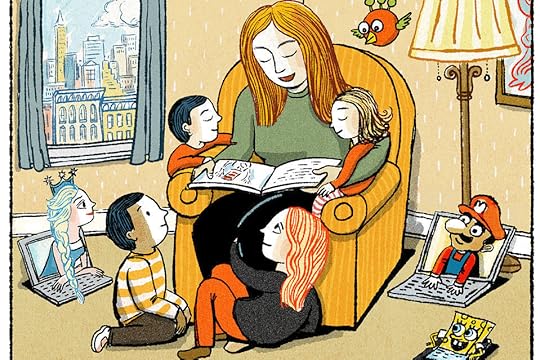 Meghan Cox Gurdon writes about the pleasures of reading aloud to your children in the WSJ:
Meghan Cox Gurdon writes about the pleasures of reading aloud to your children in the WSJ:
http://www.wsj.com/articles/the-great-gi…
Certainly in the modern era there is something quaint about a grown-up and a child or two sitting in a silence broken only by the sound of a single human voice. Yet how cozy, how impossibly lovely it is! Unlike tech devices, which atomize the family by drawing each member into his own virtual reality, great stories pull people of different ages toward one another, emotionally and physically. When my children were small, I would often read with my eldest daughter tucked in by my side, the boy draped like a panther half across my shoulders and half across the back of the sofa, a tiny daughter on either knee, and the baby in my lap. If we happened to be on one of our cycles through “Treasure Island,” Robert Louis Stevenson’s swashbuckling classic, my husband would come to listen, too, and stretch out on the floor in his suit and tie and shush the children when they started to act out the exciting bits.
“We let down our guard when someone we love is reading us a story,” Ms. DiCamillo says. “We exist together in a little patch of warmth and light.”
A patch of warmth and light: that phrase brought to mind so many scenes of storytelling by firesides that radiate heat and light, but also cast tall shadows in the dark. There is something warm, wonderful, and comforting about stories, precisely because they are the candles that enable us to see shadows and to face down our fears.
I have been reading The Runaway Bunny and other books to my three-month-old granddaughter, and I marvel at how the words in the story enable me to communicate with her, even if she does not yet have the gift of language.
Gurdon’s article reminded me of some of my happiest memories–reading Les Miserables with my children, 8 and 10, who adored the idea of a book that big; then reading Moby-Dick with my son when he was in high school (it gave him some relief from the solitary activity of homework); and reading my children to sleep with The Wind in the Willows, the only book that actually did put them to sleep with its lyrical beauty.
June 14, 2015
Remembering a Childhood
Yes, guilty as charged. I admit that the idea of a novel in free verse stood as a barrier between me and Brown Girl Dreaming. I had ordered the volume after reading about the flap with Daniel Handler at the National Book Awards, but let it languish until a transcontinental plane ride inspired me to pack up a few of the unread books I’d ordered over the past months–nothing like a plane ride for reading novels.
This is the kind of book that makes you want to go back. I found myself moving back and forth between reading as an adult and reading as a former child, and at times wishing that the book had been there when I was growing up. “Memory is strange,” Woodson writes. “When I first began to write Brown Girl Dreaming, my childhood memories of Greenville came flooding back to me–small moments and bigger ones, too. Things I hadn’t thought about in years and other stuff I’ve never forgotten.” What I love about this book is how the reader’s encounter with Woodson’s childhood memories mirrors the author’s experience in writing the book. Reading the book and writing it trigger repeated madeleine-like experiences.
I’m reminded of how odd it is that we have this category called YA fiction–Christina Phillips Mattson has written a dissertation on the topic (Harvard 2015 Ph.D.)! This is a novel about a childhood, and it captures that childhood as powerfully as Proust or Rilke did in their time. Today more than ever, writers of so-called YA fiction are challenging a category that was most likely coined by someone in the publishing industry. I have not yet tracked down the origins of the term, but I suspect it emerged in the 1950s and 1960s by someone who decided that the coming-of-age novel was not “adult” reading. Could the phenomenal commercial success of Salinger’s Catcher in the Rye and Golding’s Lord of the Flies have had something to do with it?
On another note (I could go on and on about Woodson’s book), here’s what I posted on Facebook:
I read Brown Girl Dreaming this afternoon and what should be in it but the Selfish Giant! Woodson describes hearing her teacher read the story and going to the library to borrow a copy of it. “I read the story again and again.” She memorizes the story and recites it to her classmates, who are deeply impressed. “But I just shrug, not knowing what to say. How can I explain to anyone that stories are like air to me, I breathe them in and let them out over and over again.” WOW
Remember Scout’s words in To Kill a Mockingbird: “Until I feared I would lose it, I never loved to read. One does not love breathing.”
June 6, 2015
The Child As Philosophy in Motion
Anthony Lane reviews Robert Douglas-Fairhurst’s The Story of Alice: Lewis Carroll and the Secret History of Wonderland. Neither Douglas-Fairhurst nor Lane unearth any secrets about Wonderland, but Lane offers a wonderfully concise tutorial on Lewis Carroll and the Alice books.
Conversations about what is real, what is possible, and how rubbery the rules that govern such distinctions turn out to be abound in the tales of Alice. Yet they are sold as children’s books, and rightly so. A philosopher will ask how the identity of the self can be preserved amid the ceaseless flux of experience, but a child—especially a child who is growing so fast that she suddenly fills an entire room—will ask more urgently, as Alice does, “Was I the same when I got up this morning? I almost think I can remember feeling a little different.” Children, viewed from one angle, are philosophy in motion.
And my latest favorite passage from Alice’s Adventures in Wonderland:
`I see nobody on the road,’ said Alice.
`I only wish I had such eyes,’ the King remarked in a fretful tone. `To be able to see Nobody! And at that distance, too! Why, it’s as much as I can do to see real people, by this light!’
May 27, 2015
Oscar Wilde’s Fairy Tales at UCLA on May 29
April 12, 2015
Editor’s Tough Love
http://www.nytimes.com/2015/04/12/busine…
John Green still vividly recalls the opening line of a stinging critique that his editor, Julie Strauss-Gabel, delivered after reading an early draft of his novel “The Fault in Our Stars.”
“The first sentence was, ‘I really enjoyed reading the first draft of this promising and ambitious novel,’ and the rest was 20 pages of her tearing it apart,” Mr. Green said. “Her editorial letters are famous for their ability to make you cry and feel anxious. They’re very long, very detailed and very intimidating.”
One of her more memorable barbs described an overwrought climactic scene as reading “like bad John Green fan fiction,” Mr. Green recalled. He changed the ending.
Mr. Green didn’t suffer an ego bashing in vain, at least. In its revised and polished final form, “The Fault in Our Stars,” a novel about two teenagers with cancer who fall in love, became a monster hit.
March 28, 2015
Zalka Csenge Virág Blogs about The Turnip Princess

http://multicoloreddiary.blogspot.com/20…
The Turnip Princess is here and it’s great
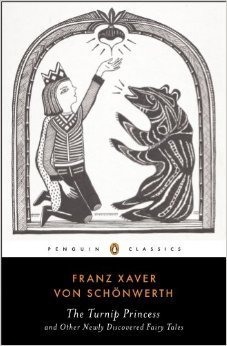
So, remember that one Guardian article from 2012 that some people still post on your Facebook wall every other week? It’s titled “Five hundred new fairy tales discovered in Germany!” Well, good news: the much-awaited English translation is finally here!
…
Well, actually, a bilingual German-English volumehas been out since last year, but the new book, titled The Turnip Princess, adds another batch of sixty-something tales now available in English. Yay!
I have probably waited the publication of this book with more excitement than most people wait for the new Star Wars movie. My boyfriend ordered it for me as a late birthday present (because for some reason not all folktale collections are published on my birthday, which is a crying shame). I devoured the entire volume in two days, and my copy now looks like this:
In which green slips stand for stories I want to tell (14), orange slips stand for stories that are also included in the other volume (7), and pink slips stand for notable moments. I have been busy.
The edition itself is very well done. Stellar intro from Maria Tatar (Hungarian pride!), extensive and thought-provoking notes on each tale, and an appendix with archive numbers, folktale types, and places of collection. Everything a storyteller can wish for.
And now, for some of the highlights!
1. Even though Tatar claims it’s “not part of the European canon,” the story of King Goldenlocks is actually a version of The Golden-haired gardener, a Hungarian folktale I just told two months ago at the Tenerife storytelling festival. I have never known another version of it, so I was delighted to find one in here!
2. Similarly, The Flying Trunk proved to be another variation of a Hungarian folktale that I included in my own book (The Winged Prince), and never found another version of. It is also a Cinderfella story where a prince loses a boot…
3. I was most excited about the Dung Beetle Prince tale that was teased in some of the articles, and it turned out to be the most adorable little story. I won’t spoil it, but it’s great.
4. There is a great number of tales in the volume that feature wood sprites, wood nymphs, gnomes, mermaids, and other mythical creatures, and most of them seem to be on amicable terms with humans. The darker steak is reserved for the mermaids who destroy mortals by loving them; but the woodland creatures are generally helpful and friendly, and revel a less known side of German folklore.
5. There is a version of the Pied Piper in this book (The Mousecatcher, or the Boy and the Beetle) that picks up where the children disappear inside the mountain. Think about that for a moment.
6. This volume (and the other one as well) features a tale that is a full-blown prequel to the popular “Tall, Wide and Sharpsight” folktale type, explaining how the magical helpers in these stories originally received their abilities. Yup. It’s a superhero origin story, and it’s titled Sir Wind and His Wife.
7. There is a tale of mortal girls marrying ice giants and living happily ever after.
8. At the end of a “Valiant Little Tailor” type story the princess refuses to be given as a prize and makes plans to murder the hero she is forced to marry.
9. There is a magical procedure described for turning a dragon back into a princess. (People get turned into some weird things in this book – among others weasels, tortoises, beetles, and little fish.)
10. There are several recognizable elements of pagan mythology, such as a folktale version of Freya’s necklace.
11. More than one story deals with why people should not torture animals or vandalize trees. The tree one (The Singing Tree) gets especially creative in driving the point home.
Definitely a recommended read for storytellers.
From Maria Tatar: Thank you for those wonderful comments about the individual tales! I can’t wait to hear your versions.
March 25, 2015
Interview with Mary Sue, and a link in case you are unfamiliar with the term
The Mary Sue Interview: Fairy Tale Expert and The Turnip Princess Translator Maria Tatar – OUAT…
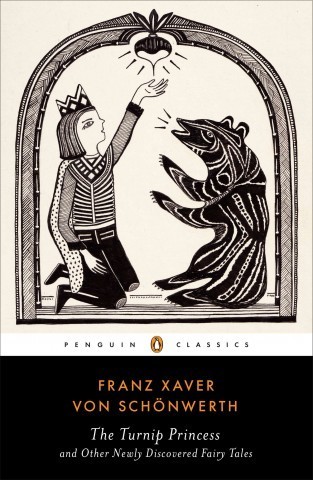
A contemporary of The Grimm Brothers (Jacob Grimm once said of him, “Nowhere in the whole of Germany is anyone collecting [folklore] so accurately, thoroughly and with such a sensitive ear”), Franz Xaver von Schönwerth was a Bavarian historian who dedicated his life to researching and collecting fairy tales from the oral tradition.
Now, after over 150 years of being “lost” in an archive, Schönwerth’s fairy tales have been translated and curated by folklore expert Maria Tatar into The Turnip Princess and Other Newly Discovered Fairy Tales. Via email, Tatar took the time to talk to us about the enduring appeal of stories like Cinderella, modern oral traditions, and why “the house of fairy tales” has more room for change than we might expect.
Carolyn Cox (TMS): What inspired you to start working with folklore and fairy tales?
Maria Tatar: I’ve always had a deep attachment to stories that are wired for weirdness. I remember clutchingAlice’s Adventures in Wonderland tightly to my chest as my 4th-grade teacher scolded me for reading a book that was really meant for adults. When I began reading fairy tales to my children, I was shocked and startled by the grotesque twists and turns in the plots. A stepmother decapitates her stepson and cooks him up in a stew; stepsisters cut off their toes and heels to try to make their feet fit a shoe; a woman wishes desperately for a child and gives birth to a hedgehog. I discovered that these stories were once adult entertainments—what John Updike called the television and pornography of an earlier age. They are melodramatic, operatic, and have a racing energy that helped pass time when told to the rhythms of repetitive labors on long evenings. Today we watch Breaking Bad and read Fifty Shades of Grey—the demands were not all that different in an era before books and electronic entertainments.
TMS: What about the rediscovery of a “lost” fairy tale anthology do you think inspired such excitement, even in people who might not have had a vested interest in mythology or storytelling?
Tatar: Our fairy-tale repertoire is not as expansive as it could be. At times it feels as if we ferociously repeat the same stories: “Cinderella,” “Snow White,” “Little Red Riding Hood,” “Sleeping Beauty,” and “Jack and the Beanstalk.” Even though we are constantly hitting the refresh button and reinventing the characters and their stories, the appeal of the new is always there. And so we welcome “something completely different”—new stories that might offer other archetypes and tropes. In The Turnip Princess, it’s a delight to discover a boy named Lousehead who slaves away in the kitchen, along with a fellow who is so thrilled to have a pair of red boots that he wears them everywhere—until one gets lost!
TMS: Do you foresee any of Schönwerth’s tales becoming as huge a part of the North American cultural landscape as stories like “Cinderella” or “Snow White,” and if so, which ones?
Tatar: My hope is that Schönwerth’s stories will renew our interest in exploring the many collections found the world over. I imagine that “Prince Goldenlocks” or the “Turnip Princess” will inspire some adventurous spirits to take up their stories and create new versions of them. That’s already happening on the Internet. It’s something of a challenge to unseat the Grimms, who mastered the art of writing down stories taken from an oral tradition. They standardized the stories in ways that made them reader-friendly, without any of the bumps and rough edges you find when you take the story straight from the source. And the Grimms of course also had the advantage of the perfect last name. Schönwerth’s stories have gaps, inconsistencies, and surreal moments that get us thinking more and talking about what the characters could, should, or might do. That’s what I love about them. They are diamonds in the rough, unpolished and at times unfinished, telling us what the stories were like in their oral versions, raw rather than cooked.

TMS: What qualities do you think give certain fairy tales (again, I’m thinking of the immense popularity stories like “Snow White” have in the U.S.) an enduring appeal?
Tatar: Fairy tales are all about the hyper-dysfunctional family: wicked stepmothers, fathers who are bent on marrying their daughters, siblings who viciously gang up on the youngest and weakest, and so on. They are full of excess, exaggeration, and unforgiving violence, enacting worst-case possible scenarios. We have a cultural repetition compulsion about fairy tales precisely because they are so outlandish. As we process what goes on in them, we begin to manage our own anxieties and desires, and we also begin to figure out how to navigate the real world. Fairy
tales, like all great stories, take up cultural conflicts: the predator/prey relationship in “Little Red Riding Hood” (a story that has also come to be about innocence and seduction). In “Beauty and the Beast,” the conflict turns on monstrosity and alterity—how do we react to the other, with revulsion or with kindness and compassion? “Hansel and Gretel”—there’s a coming-of-age story about leaving home, entering the woods, defeating monsters, and finding a way back home.
TMS: I can’t imagine the amount of work that goes into a project like this. Can you talk a little bit about the process of bringing The Turnip Princess together?
Tatar: I initially imagined that I could translate Schönwerth’s stories on the side, but I quickly realized that these tales were completely absorbing and demanded my full attention. First off, they were so different from what the Grimms collected in the 19th century, what Charles Perrault gathered in 17th century-France, and what Giambattista Basile wrote down in 17th-century Italy. There was a rough-hewn quality to them that I wanted to preserve, despite the impulse to imitate the Grimms’ wonderful fairy-tale style. I had different routines, but generally I would read the entire story a couple of times, then take the story one sentence at a time, trying to “English it,” as the philosopher Hannah Arendt put it. Even then each story went through several iterations. I was somewhat daunted by the fact that you can keep making improvements but at a certain point you have to declare victory.
TMS: What’s your favorite story from the collection?
Tatar: Nothing beats “The Enchanted Quill,” with its heroine who claims that she has cooking and cleaning skills so that she can work where the prince lives. She burns all the dishes and fails miserably at keeping house. But she does know how to write, and she uses an enchanted quill to conjure dishes that appear in sparkling bowls and to ward off pesky suitors. She writes her way to a happily ever after.
TMS: Do you think we have any oral traditions today that are comparable to the storytelling seen in Schönwerth’s time?
Tatar: In an earlier age, storytellers were constantly improvising, taking the tropes of fairy tales (princess on a glass mountain, seven-league boots, table that sets itself) and putting them together in new ways. Today fairy tales remain in old media but—short, sweet, and bit-y—they have also migrated into new media, where they are remixed and mashed up to produce new stories, told for us, in the here and now. They operate in kaleidoscopic fashion, constantly adapted to make them culturally relevant. What makes the Schönwerth collection so important is that it reminds us of the vast repertoire out there. Instead of working with a fixed, stable canon of fairy tales, we suddenly discover that animal suitors can come in all shapes, sizes, and species and that the storied Cinderella/Snow White figure—the innocent victim of persecution at home–can also be a boy. The house of fairy tales turns out to be far more capacious than we once imagined.
February 26, 2015
10 Lesser-Known Fairy Tales That Should Get More Love
Maria Tatar's Blog
- Maria Tatar's profile
- 316 followers


